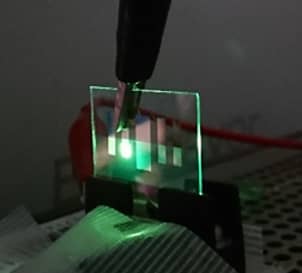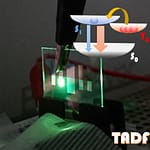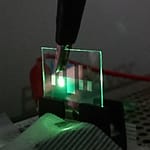OLED May 2025 Papers list.
近年、有機EL(OLED)技術は高効率・高色純度・高機能性の実現に向けて急速に進展している。青色発光材料の開発では、multiple-resonance型発光分子にdiindolocarbazole骨格を導入し、電子受容体TPTで修飾したpICz-TPTが開発された。これにより、逆項間交差(RISC)速度が大幅に向上し、狭帯域青色発光(449 nm, FWHM 44 nm)を保ちながら、非増感型OLEDでEQEmax 14.4%、ハイパーフルオレッセンス型で24.2%を達成した。また、π拡張および重原子ドーピングを併用したMR-TADFエミッターでは、スピン軌道相互作用を高めることでEQEmax 40.5%、極めて高いBlue Index(BI)を実現した。
一方、機能性の拡張として、超薄型OLEDを搭載したワイヤレスコンタクトレンズも開発され、オンアイで網膜電図(ERG)測定が可能な新しいデジタルヘルスケア技術として注目されている。加えて、中心不斉や二量体構造、ペロブスカイト材料や量子ドットの改良による高効率・長寿命・高円偏光発光のOLEDも報告されており、デバイス性能と安定性の両立が進んでいる。これらの研究成果は、高性能・多機能な次世代OLEDの設計において重要な指針を提供している。
In recent years, organic light-emitting diode (OLED) technology has rapidly advanced toward achieving high efficiency, color purity, and multifunctionality. In the development of blue-emitting materials, a multiple-resonance-type emitter incorporating a diindolocarbazole framework and modified with an electron-accepting TPT unit, pICz-TPT, has been reported. This design significantly accelerated the reverse intersystem crossing (RISC) rate and achieved narrowband blue emission (449 nm, FWHM 44 nm), with a maximum external quantum efficiency (EQEmax) of 14.4% for undoped devices and 24.2% for hyperfluorescent devices. Furthermore, π-extension and heavy-atom doping strategies applied to MR-TADF emitters enhanced spin–orbit coupling, resulting in an EQEmax of 40.5% and an exceptionally high Blue Index (BI).
In parallel, functionality has been expanded through the development of ultra-thin, wireless OLED-based contact lenses capable of on-eye electroretinography (ERG), attracting attention as a new digital healthcare platform. Additionally, high-performance OLEDs with long lifetimes and strong circularly polarized luminescence have been reported using chiral centers, dimeric structures, perovskite materials, and quantum dot improvements. These advances offer valuable insights for designing the next generation of high-performance, multifunctional OLED devices.


